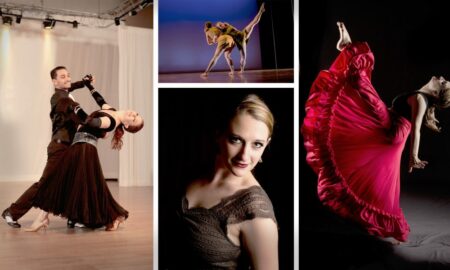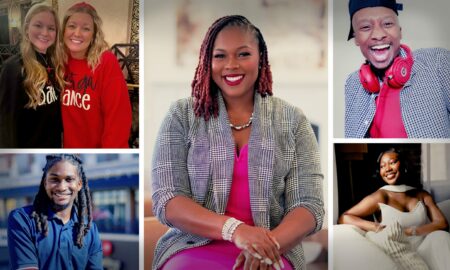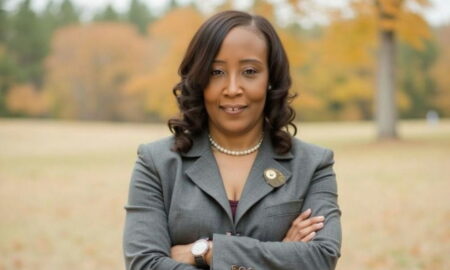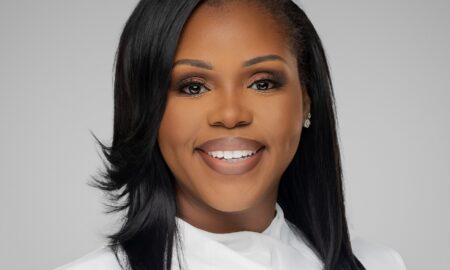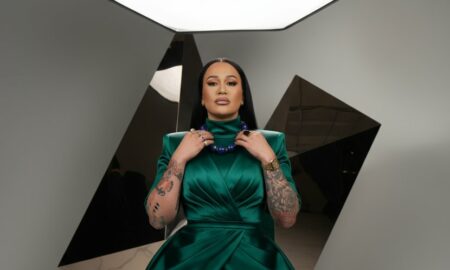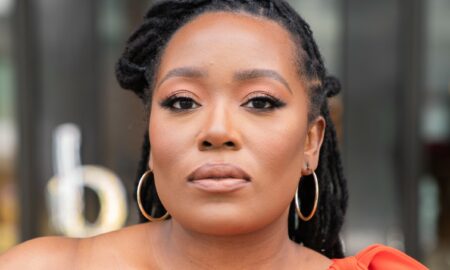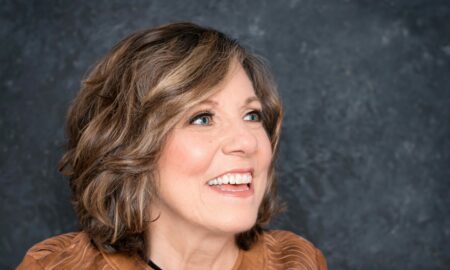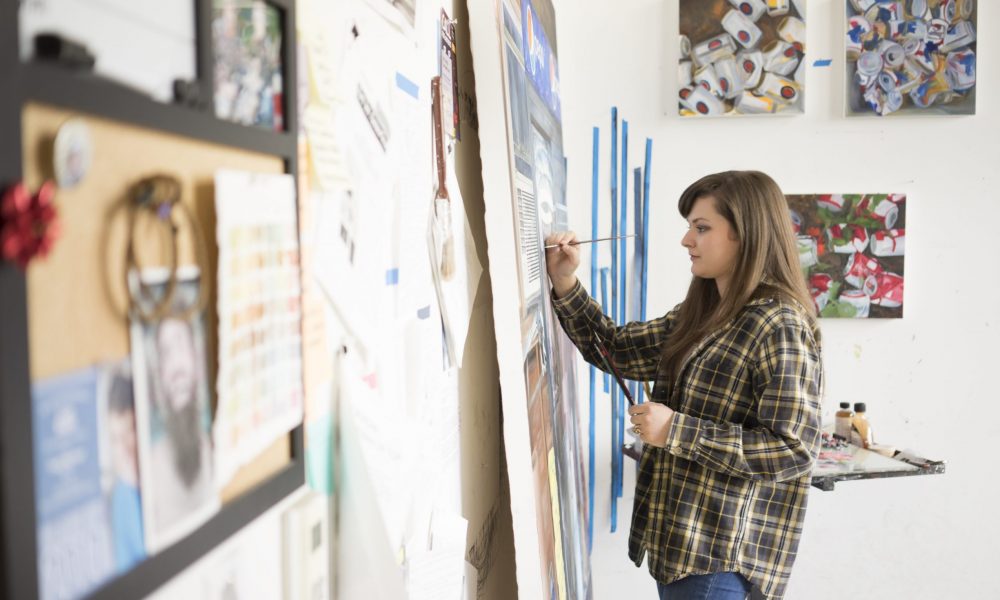

Today we’d like to introduce you to Katelyn Chapman.
Katelyn, we’d love to hear your story and how you got to where you are today both personally and as an artist.
Growing up on a road named after my Great-great grandfather, on land he purchased in 1905, I lived through five generations of stories nearly everyday of my life. Sometimes the pages to those stories, or the things that held them were waiting to be read in plain sight; while others were and still are tucked away and hidden, remaining to be discovered. From family possessions like old farming equipment, houses, barns, and outbuildings, to old photographs, and even the dirt that my ancestors worked and lived off of, I’ve seen and held the remnants of my own histories my entire life. Every time I think about them, I can hardly find the right words to express how they make me feel. These emotions are only enhanced when I see photographs of family members taken before my lifetime, in the very same places I have seen, touched, smelled, or sensed in some way. I can’t tell if their memories have become mine or if I have made up my own memories to be theirs.
I have sensed the unique peculiarity of it all since I was a young girl. I started photographing everything I could on my family’s property with a piqued interest when I was in high school. With each year that passed especially as I went on to college, I saw how much everything was changing. It wasn’t just the old houses and barns being taken back by nature and deteriorating at an alarming rate, but the surrounding pockets of acreage being sold off to developers as generations passed. I remember feeling a sudden rush of sadness and fear when I realized things wouldn’t always be as I remembered as a child. What was once the epitome of small town America will be leveled in many ways by the influx of development and progress.
Art has always been my creative outlet and something I knew I wanted to pursue as a career since I was really young. I started out studying art at Lander University, a small school in Greenwood, South Carolina and later transferred to Clemson University where I graduated with my BFA with an emphasis in Drawing in 2014. With encouragement from professors and peers, I applied to graduate school and ended up at the University of Georgia in Athens. I received my MFA in Painting and Drawing in 2018. Throughout my time in school, I found my interest in subject matter kept pulling me back home. Ultimately, the early sensation to photograph what I feared losing has turned into a full-blown documentation of deeply rooted Southern culture, primarily through painting. I’m so deeply connected to this specific place in the Midlands of South Carolina that I can’t break away from it. It is and always will be home.
We’d love to hear more about your art. What do you do and why and what do you hope others will take away from your work?
I make paintings that explore episodes of working-class life and culture in America’s rural South through the lens of my own family and friends with both history and storytelling. Through a generative process, I use photography to catalogue specific moments indicative of my Southern experience, which then evolve from reference points into physical paintings. The medium of paint allows me to break down in generalities what I see documented in the instantaneous moment of the photograph, and gradually reconstruct its specificities with labored time into an image that is based on more than sight and line. With paint, touch becomes active and unique in its ability to describe objects, whereas a photograph leaves its surfaces uniform and polished. Painting’s physicality is referential to the human mind allowing elements of memory, mystery, and doubt to materialize. My paintings encapsulate compressions of history unlike their photographic sources, which capture one view from the moment when the camera’s shutter snapped.
Employing all aspects storytelling—from literary to lyrical to visual—I create paintings as souvenirs or facets of the vanishing region that I call home. The ever-evolving notions and characteristics of rural culture in the American South are imbedded in the traces and residue of human touch framed through the still life and souvenir as collections. I depict configurations of objects and collections as mementos, which substitute the scenes of their original experiences. As the souvenir authenticates the past, the past lends authenticity to the future, thereby fully engaging with the contemporary world. This notion allows me to give an honest voice to the rural South, one that is all too often misunderstood, misconstrued, or completely discounted by its outsiders. By painting these accounts, I celebrate, honor, and show reverence towards the customs and traditions of the rural working-class South.
I also address the erasure gap between two cultures by asserting the importance of the rural within an urban context. Adding to the conversation of contemporary art I utilize my agency as both insider to the rural South, and as a visual artist, to paint authentic histories that pay tribute to the nuances and traditions of rural life in the construct of fine art. My work is ultimately an endeavor to generate and archive a selection of personal memories, anecdotes, and experiences that others might not have ever seen or remembered if they were never replicated.
Given everything that is going on in the world today, do you think the role of artists has changed? How do local, national or international events and issues affect your art?
I still believe that the role of the artist is to be a purveyor of the weird, the grotesque, the beautiful, and the uncommon. Artists have always been ambassadors in their own rights; however, as the world changes the issues that artists deal with change along with it. The issues I confront in my own work stem from a local level; so local that the majority of my subject matter and source material comes from just a few mile radius of the house I grew up in. Even though this source of inspiration is local to me, I know it relates to similar stories of many other rural Americans all over the South and across the country. From there it spans out into a global rural vs. urban conversation.
I’ve found that the voice of the rural, especially in the American South, is highly underrepresented in both high art and academia for many reasons. There are often less opportunities for people in rural communities or a lack of resources for their voices to be heard. While in grad school, I was shocked with how far removed many people in higher ed were from rural roots. This erasure gap between rural and urban is really a catalyst for my work and initiative to bridge the divide between the two.
Do you have any events or exhibitions coming up? Where would one go to see more of your work? How can people support you and your artwork?
I currently have a piece on view in Columbia, SC at the South Carolina State Museum’s 30th Anniversary Exhibition held in Lipscomb Gallery, which will be up until March 9th. In addition, I am honored be a part of the 2019 Miami University Young Painter’s Competition for the $10,000 William and Dorothy Yeck Purchase Award. I will have two paintings in this exhibition which runs from January 14 – February 28 in Hiestand Galleries at Miami University in Oxford, OH. In the Fall I will have a month-long solo exhibition at Tennessee Tech University in Cookeville, TN.
People can support my work in many ways. Go see the work in person if you can! Seeing familiar faces and meeting new ones at exhibition openings means the world. Even if you can’t afford to buy the artwork, sharing posts through social media, commenting on or liking it, and telling others about it are great ways to show support too.
Contact Info:
- Website: www.katelynschapman.com
- Instagram: @kschap
- Other: https://hopperprize.org/artist/2018_katelyn_chapman/






Image Credit:
Stephanie Sutton
Getting in touch: VoyageATL is built on recommendations from the community; it’s how we uncover hidden gems, so if you know someone who deserves recognition please let us know here.


